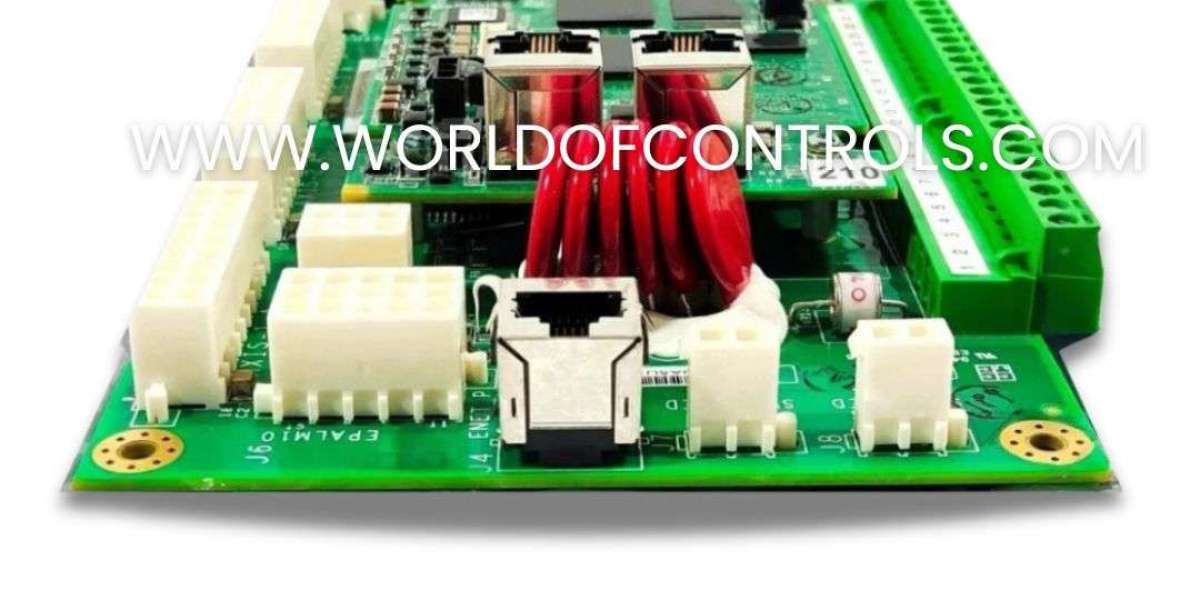Introduction: Precision in the Wind Energy Era
Wind turbines are marvels of modern engineering, converting kinetic wind energy into usable electricity. But behind the towering blades and rotating hubs lies a sophisticated control system responsible for ensuring every turbine operates efficiently, safely, and reliably. One of the most vital components of this system is the pitch module, particularly the one integrated into GE’s Mark VIe control platform.
The pitch module determines how the blades interact with wind—regulating their angle or “pitch” in real time. This subtle control is essential not only for maximizing power output but also for protecting the turbine under changing wind conditions.
What is the GE Mark VIe Pitch Module?
The Mark VIe is GE’s advanced control system platform used across various energy sectors. In wind turbine applications, the pitch module within the Mark VIe framework plays a dedicated role in blade angle management, ensuring the turbine performs optimally under a wide range of conditions.
Installed in the Pitch Control Cabinet, this module receives data from wind sensors, monitors turbine speed, and communicates with the turbine's control system. Based on real-time calculations, it sends commands to the pitch actuators—mechanical systems that physically adjust the angle of the blades.
This coordination allows for dynamic blade adjustment, making the turbine adaptable to even minor wind fluctuations.
Why Pitch Control Matters
1. Maximizing Energy Capture
The efficiency of a wind turbine depends heavily on blade positioning. When the blades are pitched correctly, they capture the maximum amount of wind energy and convert it into rotational motion for the generator. The pitch module ensures this happens continuously, automatically adjusting blade angles in response to shifting wind conditions to maintain optimal turbine performance.
2. Enhancing Safety and Load Management
In high wind situations or sudden gusts, turbines are at risk of damage due to excessive rotational speed or structural stress. The pitch module mitigates this risk by adjusting the blades into a “feathered” position—turning them away from the wind to reduce force and slow rotation. This is a critical safety feature that protects both the equipment and surrounding infrastructure.
3. Enabling Grid Stability and Compliance
Today’s wind turbines are expected to do more than just produce power—they must interact intelligently with the grid. The pitch module contributes to this by regulating the turbine’s power output based on grid demands. Whether it's helping to maintain frequency stability or curbing output during low-demand periods, precise pitch control is essential for grid compliance and operational flexibility.
4. Supporting Maintenance and Reliability
Modern pitch modules don’t just control—they also monitor and report. With built-in diagnostics and communication capabilities, these modules track performance metrics, detect abnormalities, and support predictive maintenance strategies. This leads to reduced downtime, lower operational costs, and extended equipment life.
Integration with the Broader Control System
A key advantage of GE’s Mark VIe pitch module is its seamless integration with other turbine systems. It communicates effortlessly with the yaw system (which aligns the rotor with wind direction), braking system, and central turbine controller. This interoperability ensures that all subsystems work in harmony for coordinated turbine operation.
Furthermore, the scalability and modular design of the Mark VIe platform make it suitable for both single turbines and large-scale wind farms. It supports remote monitoring and diagnostics, which are particularly beneficial for offshore and hard-to-access installations.
Conclusion: Precision Engineering for a Sustainable Future
In the world of wind energy, precision and adaptability are key. GE’s Mark VIe pitch module exemplifies both, playing a central role in how turbines interact with the environment and the grid. From enhancing efficiency to safeguarding assets and supporting smart maintenance, it serves as the nerve center of blade control.
As wind energy continues to scale globally, technologies like the Mark VIe pitch module are not just components—they are cornerstones of sustainable, reliable, and intelligent energy systems.







